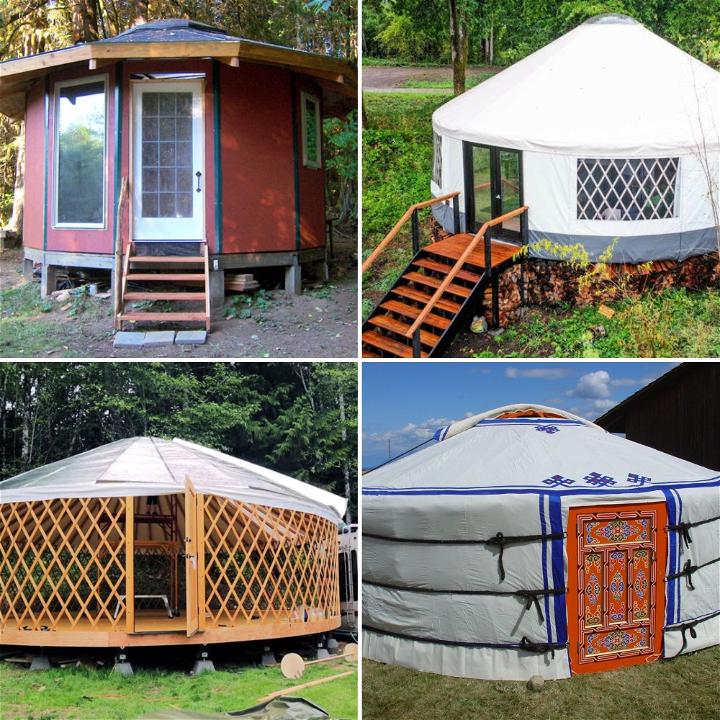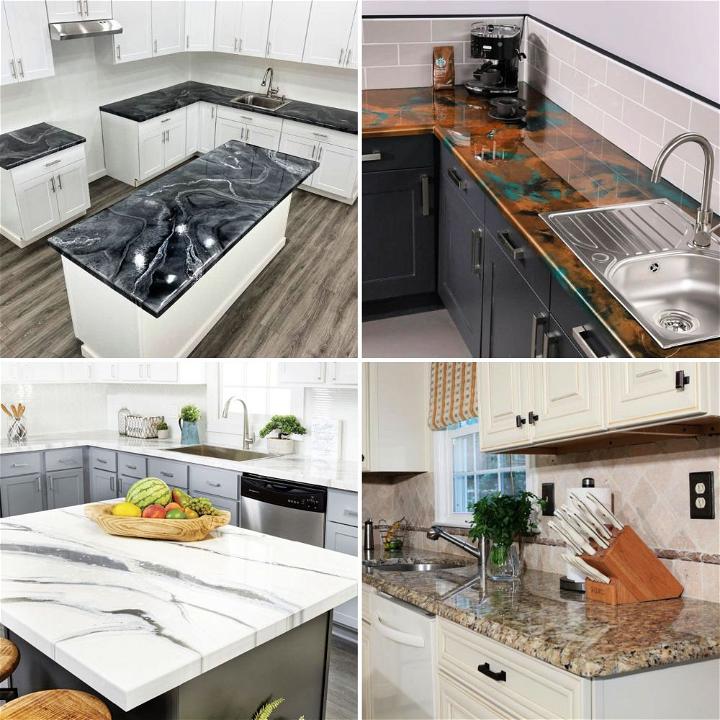Building a wood fence gate is a great way to add both aesthetic appeal and functionality to your fence. If you're ready to take on this DIY project, follow these comprehensive, easy-to-understand steps to ensure a durable and attractive gate. This guide is aimed at ensuring your project is done the right way, avoiding common errors like gate sagging. With a cost of around $140 and a completion time of 4 to 8 hours, depending on your pace, let's get started!

Materials and Tools Needed
Before you dive into the construction process, make sure you have all the necessary materials and tools.
Materials:
- Two 2x4s (preferably redwood to match the fence, but any wood will do)
- 7-10 fence pickets (6 inches wide)
- Star drive coated screws (1 and ⅝ inches and 4 inches)
- Gate hinges
- Gate latch
- Handle (optional)
Tools:
- Tape measure
- Miter saw or circular saw
- Power drill and bits
- Speed square
- Pencil
- Impact driver with socket wrench attachment (optional)
- Respirator, eye protection, and earplugs (for sawing)
Measurements
Start by taking three essential measurements:
- The distance between fence posts at their narrowest point. Measure at the top, middle, and bottom, and use the smallest of these measurements.
- The height from the top of your existing fence to the center of the bottom rail.
- The distance between existing fence rails.
Building Steps
1. Cut the Rails
According to your first measurement, cut the top and bottom rails for your gate one inch shorter to ensure easy opening and closing. A circular saw can be used for this task.
2. Lay Out Rails and Fit Hinges
Place the cut rails on a flat surface, spaced according to your fence's rail distance, subtracting three inches if using recommended hinges. Verify the alignment and squareness by measuring diagonally across the rails.
3. Cutting and Attaching the Diagonal Brace
A key to preventing your gate from sagging is installing a diagonal brace. Cut a 2x4 to fit from the bottom hinge side to the top latch side of your gate. Attach this brace using 4-inch screws, pre-drilling to avoid wood splitting.
4. Attaching Pickets
Start by attaching two pickets on the hinge side using 1 and ⅝-inch screws, ensuring they're correctly positioned based on your height measurement. This adds stability before hanging.
5. Mounting the Hinges
Mark the hinge position using a speed square for precision, pre-drill, and then secure with the provided lag bolts.
6. Hang the Gate
Lift the gate frame into position, potentially using shims for height adjustments. Attach the hinges to the post with one central bolt each, for temporary stability, before securing all bolts.
7. Finish Picket Installation
Add remaining pickets, ensuring uniform spacing by potentially trimming the last picket for a perfect fit.
8. Latch and Final Touches
Mount the latch and test for smooth operation, making any necessary adjustments. Consider adding a handle for easier operation.
Video Tutorial
For a visual step-by-step guide, watch the detailed tutorial on building a wood fence gate here.
It pairs well with this written guide, enriching your understanding with practical demonstrations of each step.
By following these steps attentively, your wood fence gate should not only look great but also stand firm without sagging. Enjoy the satisfaction of a job well done, and the improved functionality and appearance of your fence.
Maintenance Tips for Your Fence Gate
Maintaining your fence gate is crucial to ensure it remains in good condition and functions properly over time. Here are some helpful tips to keep your gate looking great and working well:
- Regular Inspection: Check your gate periodically for any signs of wear or damage. Look for loose hinges, rotting wood, rusting metal, or any other issues that might affect the gate's integrity.
- Cleaning: Keep your gate clean by removing dirt, debris, and cobwebs. For wooden gates, use a mild soap and water solution; for metal gates, you may use a specialized cleaner to prevent rust.
- Lubrication: Hinges and locks should be lubricated regularly to ensure smooth operation. Use a silicone-based lubricant for best results.
- Painting or Staining: Wooden gates should be painted or stained every few years to protect them from the elements. Choose a high-quality outdoor paint or stain for long-lasting protection.
- Adjustments: Gates can sag or become misaligned over time. Make necessary adjustments to hinges and latches to ensure your gate closes properly.
- Weatherproofing: Apply weatherproofing treatments to your gate to protect it from rain, snow, and extreme temperatures.
- Pest Control: Be on the lookout for pests like termites or rust that can damage your gate. Treat any infestations promptly to prevent further damage.
By following these maintenance tips, you can extend the life of your fence gate and keep it functioning as intended.
Legal Considerations Before Building a Fence Gate
Before you start building your fence gate, it's important to be aware of the legal considerations that may apply:
- Property Lines: Ensure you know the exact boundaries of your property. Building on a neighbor's land can lead to disputes and may require you to remove or relocate your gate.
- Permits: Some areas require a permit for fence construction. Check with your local government to see if this applies to you and obtain any necessary permits before starting.
- Homeowners Association Rules: If you live in a community with a homeowners association (HOA), review their guidelines. Some HOAs have strict rules about the types of fences and gates you can build.
- Visibility: Make sure your gate does not obstruct the view of drivers or pedestrians, as this can be a safety hazard.
- Wildlife Considerations: In some regions, gates must allow for the passage of local wildlife. Research any environmental regulations that might affect your design.
Understanding and adhering to these legal considerations will help you avoid potential issues and ensure that your fence gate project goes smoothly. Always prioritize safety, respect for neighbors, and compliance with local laws and regulations.
FAQs About DIY Fence Gate
Get all your questions answered about DIY fence gates in this comprehensive guide. Learn how to build, install, and maintain your own fence gate hassle-free.
What materials are best for building a fence gate?
The best materials for a fence gate depend on your needs for durability, aesthetics, and budget. Common materials include wood, which offers a classic look; metal, known for its strength and security; and vinyl, which is low maintenance and resistant to weathering.
How wide should a fence gate be?
A single fence gate typically ranges from 3 to 4 feet wide. If you need to accommodate larger items like vehicles, consider a double gate, which can be 10 to 12 feet wide or more.
Do I need a permit to build a fence gate?
It's possible that your local municipality requires a permit for fence construction. Always check with your local building authority to ensure compliance with regulations before starting your project.
How do I prevent my fence gate from sagging?
To prevent sagging, use sturdy materials and ensure all components are properly installed. Diagonal bracing and using heavier-duty hinges can also help maintain the gate's structure.
Can I install a fence gate on a slope?
Yes, you can install a gate on a slope by either stepping the gate or using a gate that is racked to follow the slope. Both methods require careful planning and installation.
How often should I perform maintenance on my fence gate?
Regular maintenance, such as cleaning and inspecting the gate, should be done at least once a year. Repainting or staining wooden gates should be done every 2-3 years or as needed.
What are the common problems with fence gates and how can I fix them?
Common problems include sagging, sticking, and rusting. Sagging can be fixed with tension rods or turnbuckles. Sticking may be resolved by adjusting the hinges or latch. Rust can be treated with rust converter and repainting.
By addressing FAQs, you ensure a well-built, secure fence gate. Prioritize safety and seek professionals for complex issues.
Discover 25 DIY Fence Gate Plans for Your Next Home Project

1. How to Build a Cedar Fence Gate

Building a cedar fence gate blends durability with appeal. Cedar is naturally resistant to decay, making it an excellent choice for outdoor use. Its aromatic charm adds a layer of beauty to any yard, ensuring your entrance is as inviting as it is sturdy.
2. Wooden Fence with Locking Gate
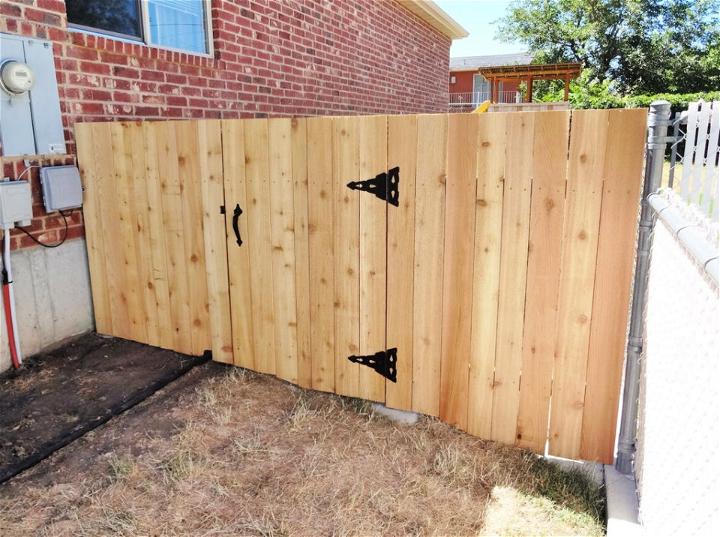
A wooden fence with a locking gate combines security with aesthetics. The lock adds a safeguard for your property, while the wood offers a warm, natural look. This design is ideal for those seeking both privacy and peace of mind in their outdoor space.
3. DIY Wooden Gate for Fence
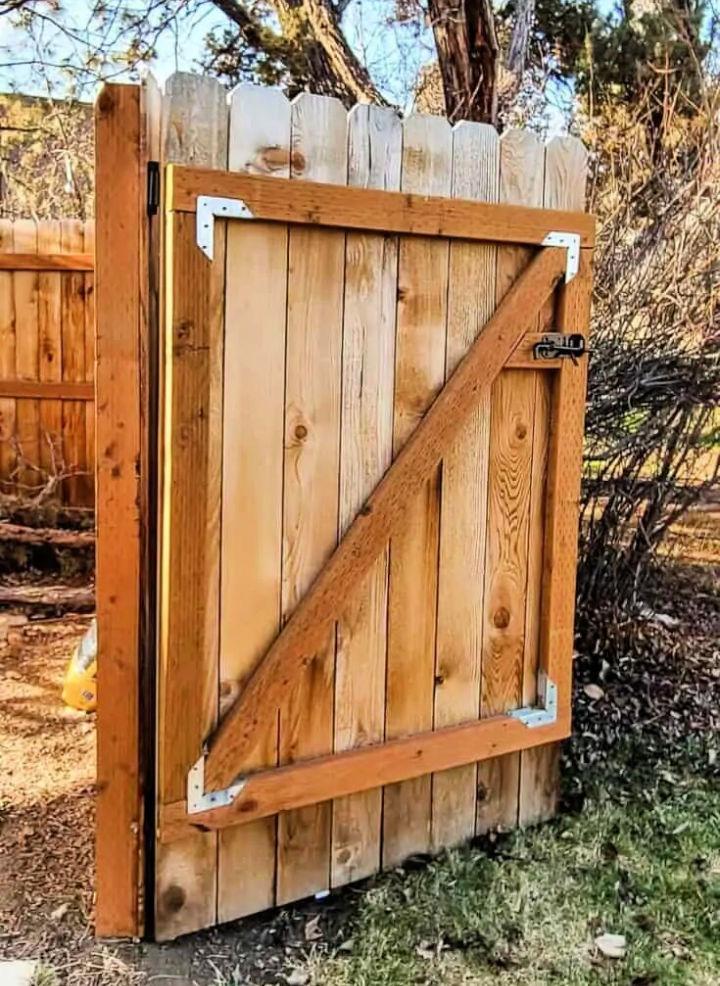
Making a DIY wooden gate is a rewarding project that personalizes your fence. It allows you to tailor the size, style, and finish to match your outdoor décor, making your entrance unique. Plus, it's a cost-effective way to enhance your home's curb appeal.
4. Building a Garden Fence Gate
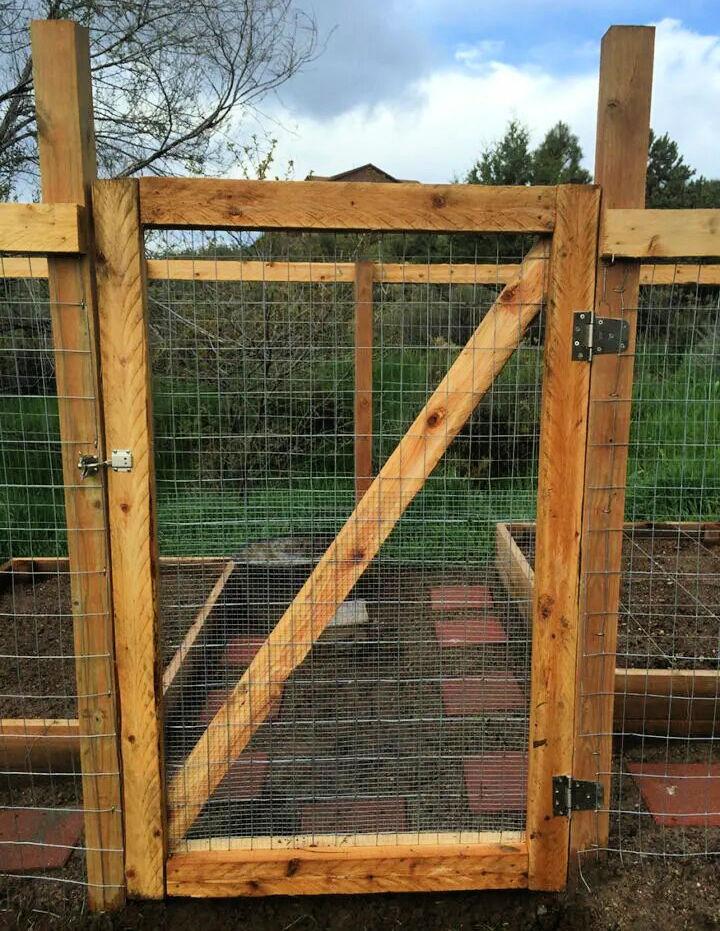
A garden fence gate not only secures your green oasis but also serves as a charming entryway. Choosing materials that complement your garden can turn the gate into a focal point, inviting visitors to explore the beauty beyond.
5. Pallet Wood Fence Gate for Bridge
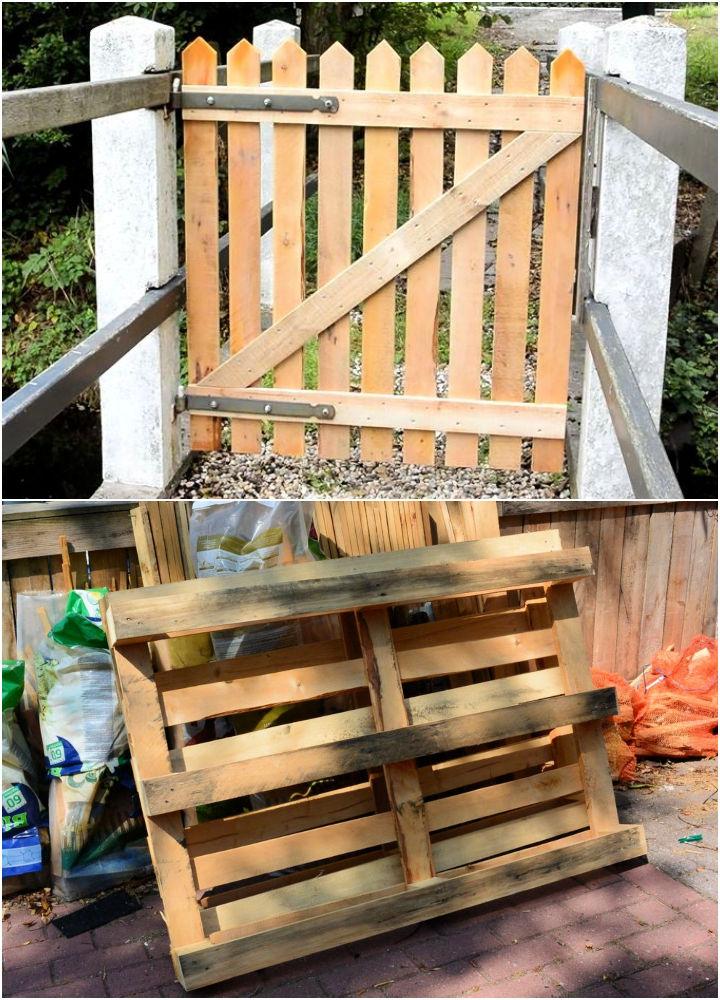
Utilizing pallet wood for a fence gate adds a rustic edge to bridge entrances. This eco-friendly choice repurposes materials for a sturdy, cost-effective solution. The unique appearance of pallet wood can build a picturesque portal to your outdoor adventures.
6. How to Make a Fence Gate
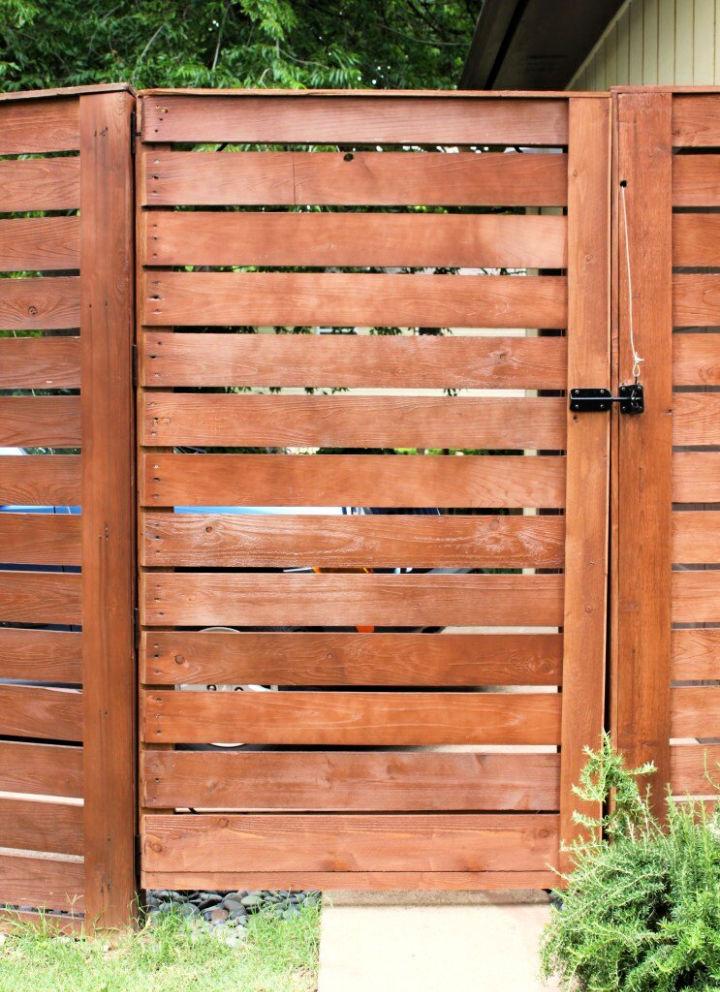
Making a fence gate is a practical skill that enhances your property's accessibility and aesthetics. Selecting the right materials and design can build a seamless transition from the public to private spaces, making your home more welcoming.
7. Removable Wood Fence Section and Gate

A removable wood fence section with a gate offers flexibility and convenience. This design allows for easy access to larger items or vehicles, making it perfect for those who need adaptable solutions for their property boundaries.
8. Free Fence Gate Plan
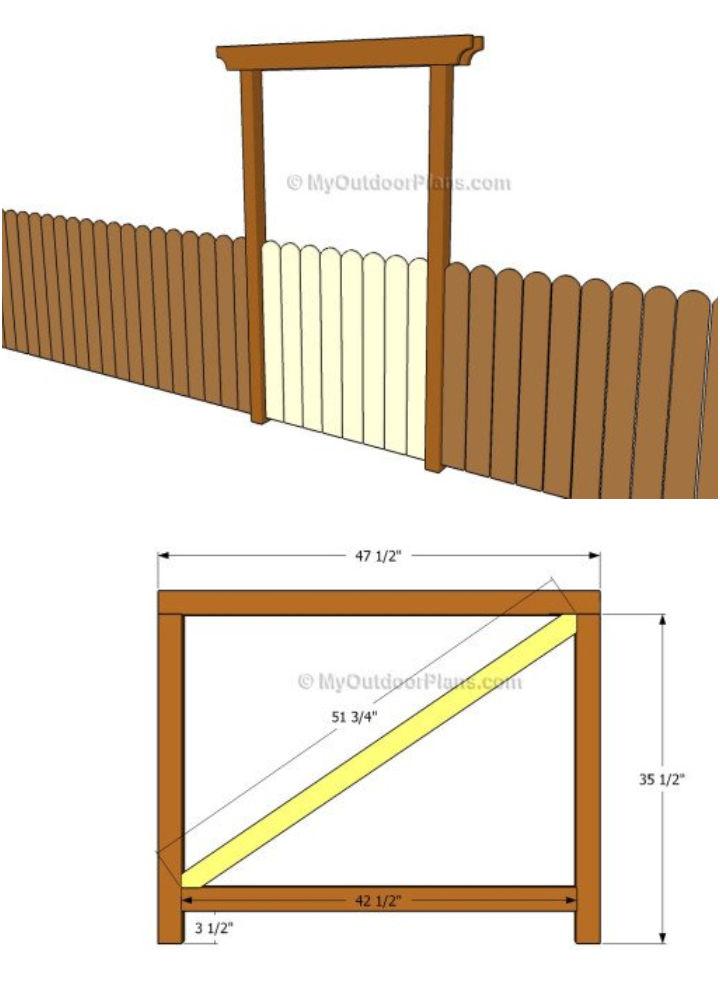
Accessing a free fence gate plan can be the first step to upgrading your outside space. These plans offer a variety of designs, catering to different styles and needs, ensuring you find an option that aligns with your vision and skill level.
9. DIY Wooden Gate for Privacy Fence

Constructing a DIY wooden gate for a privacy fence enhances seclusion with a personal touch. Tailoring the gate to complement the fence ensures a cohesive look, while also providing a secure entrance to your private retreat.
10. Durable and Good Looking Fence Gate Design
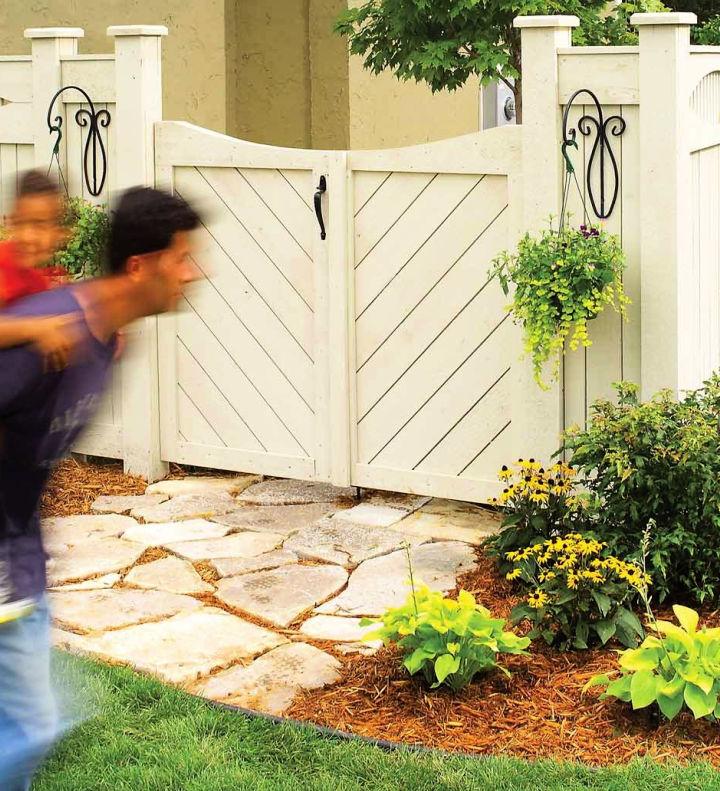
Choosing a fence gate design that balances durability with aesthetics ensures longevity and curb appeal. Materials like treated wood or metal, paired with a design that reflects your personal style, can make your gate both a protective barrier and a decorative statement.
11. Custom Fence Gate for Garden

Adding a custom fence gate to your garden not only enhances its beauty but also provides security. Its tailored design can complement your garden's aesthetic, making it a perfect entryway. Consider durable materials and a design that matches your garden's theme.
12. Build Your Own Sturdy Fence Gate
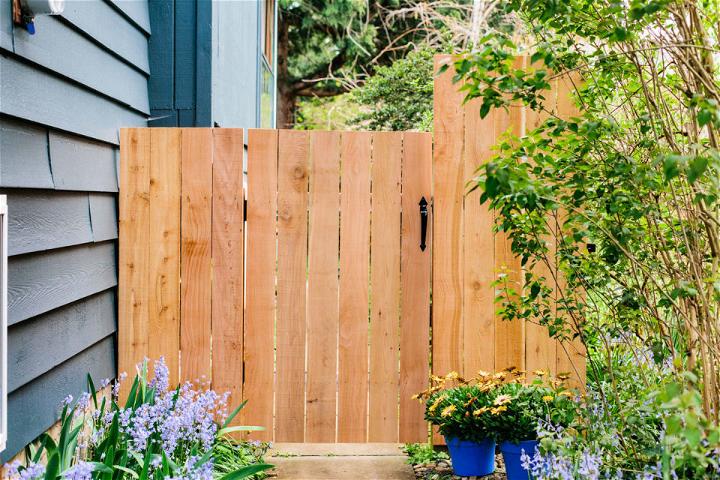
Building your own fence gate allows for a personalized touch to your outdoor space. Opt for quality wood or metal to ensure longevity. This hands-on project can be a fulfilling addition to your home, offering both functionality and style.
13. How to Install an Automatic Fence Gate
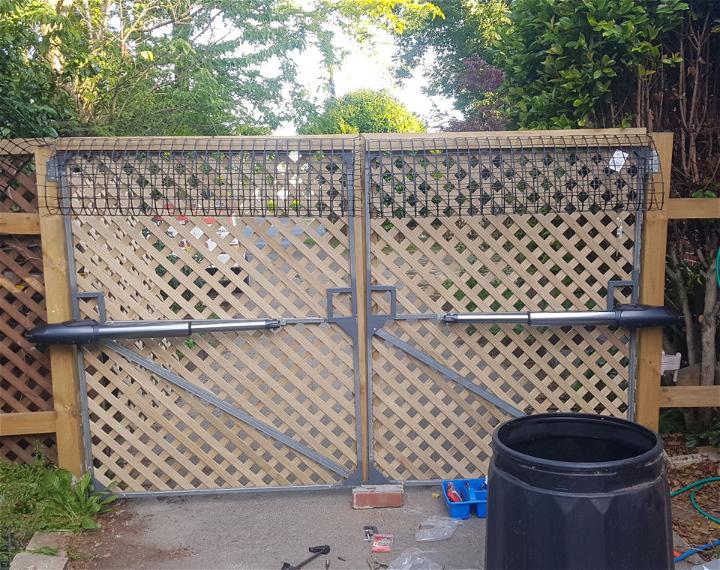
Installing an automatic fence gate brings convenience and modernity to your property. It's perfect for those seeking ease of access with security. Choose a model with reliable sensors and safety features to ensure smooth operation and peace of mind.
14. DIY Garden Gate Fence on Budget
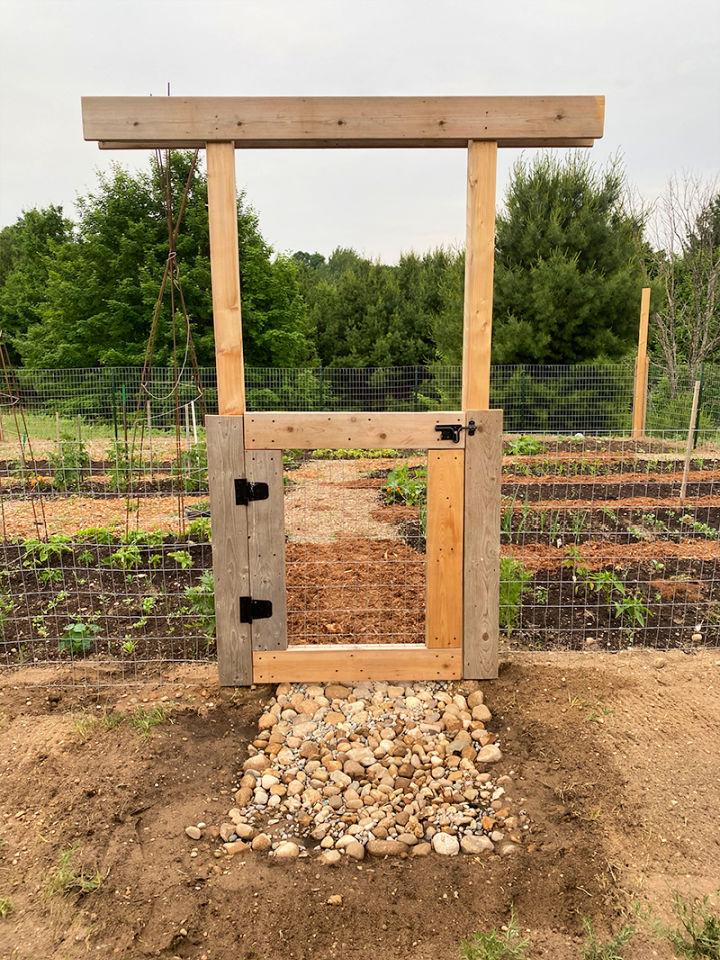
Making a DIY garden gate fence on a budget doesn't mean you have to compromise on charm or function. With recycled materials and a bit of creativity, you can construct a gate that's both economical and enchanting, adding a welcome entrance to your garden oasis.
15. Double Fence Gate for Backyard

A double fence gate elevates the accessibility and aesthetic of your backyard. Its wide opening is ideal for moving larger items in and out, and when designed to complement your home, it can significantly enhance curb appeal. Opt for symmetric or unique designs to make a statement.
16. DIY Large Fence Gates
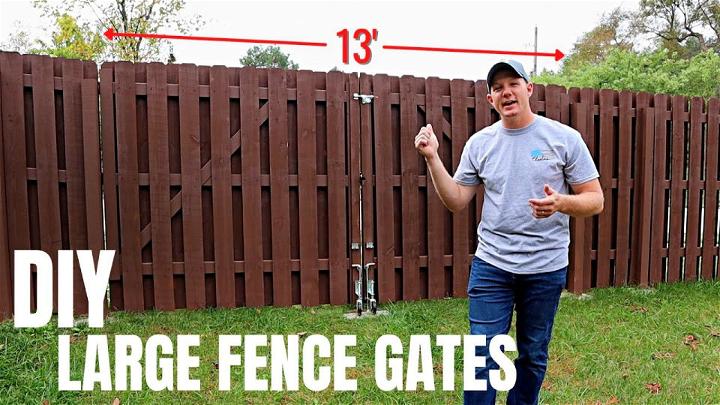
Crafting DIY large fence gates offers a grand entrance to your property, suitable for spacious areas. Use robust materials and ensure proper support to withstand its size. This project allows for custom tailoring to your landscape's dimensions, making a bold and functional statement.
17. 12 Foot Wooden Fence Gate
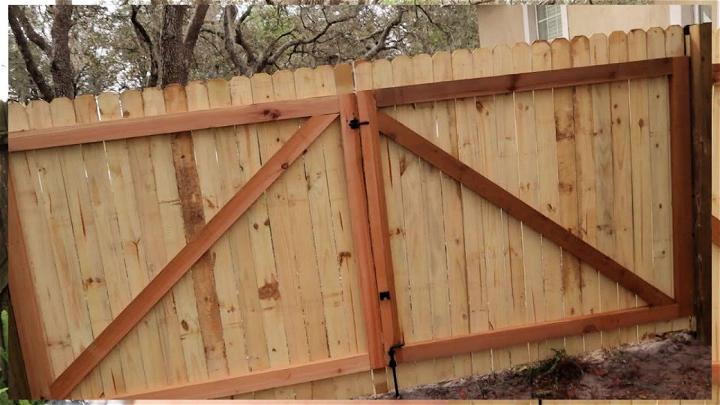
A 12-foot wooden fence gate serves as a majestic entryway, providing ample security with a touch of natural elegance. When planning, consider the weight and hinge strength to support its size. This gate type makes for a striking feature in both rural and residential settings.
18. DIY Fence Gate Step-by-Step Instructions

Following step-by-step instructions for a DIY fence gate ensures a successful project completion. Gather your tools, choose your materials wisely, and pay close attention to detail for a durable and attractive outcome. This methodical approach can make the task manageable and rewarding.
19. Fence Gate Using Lumber and Stainless Steel Hinges
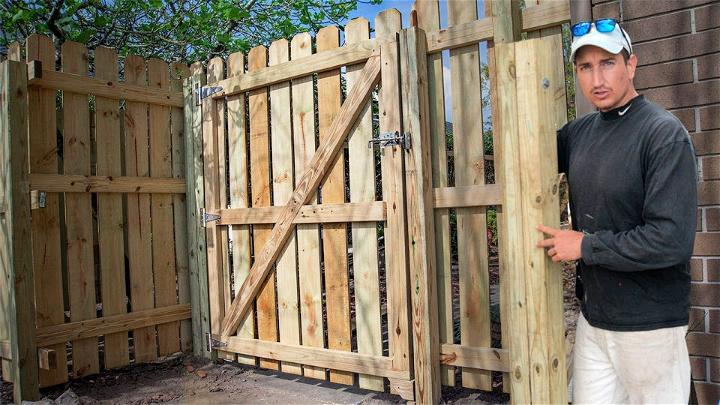
Combining lumber with stainless steel hinges offers a classic look with a modern twist for your fence gate. This mix ensures durability against weather elements while maintaining an appealing aesthetic. Consider the wood type for a seamless integration with your home's exterior.
20. Custom Fence Gate with Horizontal Paneling
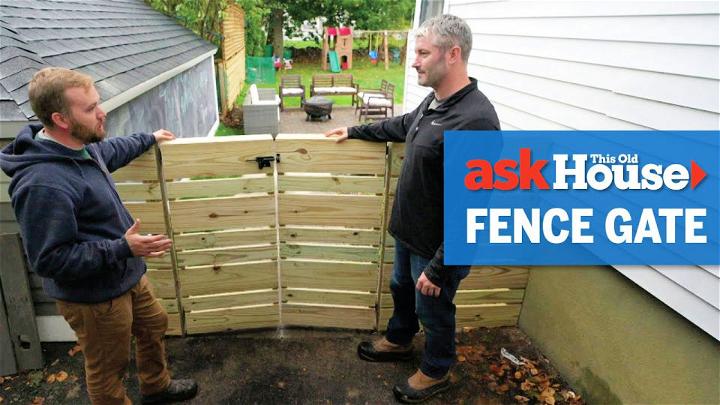
A custom fence gate featuring horizontal paneling offers a sleek, contemporary design. This style can make small spaces appear wider and integrates seamlessly with modern architecture. Choose high-quality materials and a thoughtful layout to achieve a striking yet functional gate.
21. Do It Yourself Picket Fence Gate
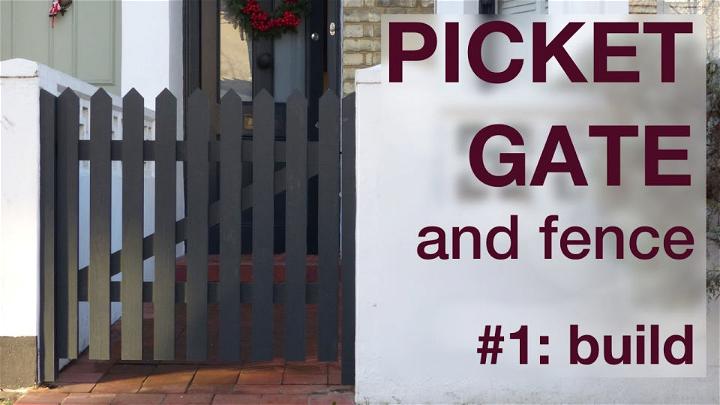
A DIY picket fence gate adds quintessential charm to your home, making a welcoming vibe right at your doorstep. With the right tools and materials, you can craft a gate that not only enhances your home's appeal but also stands the test of time with its durability.
22. Installing a Chain Link Fence Gate
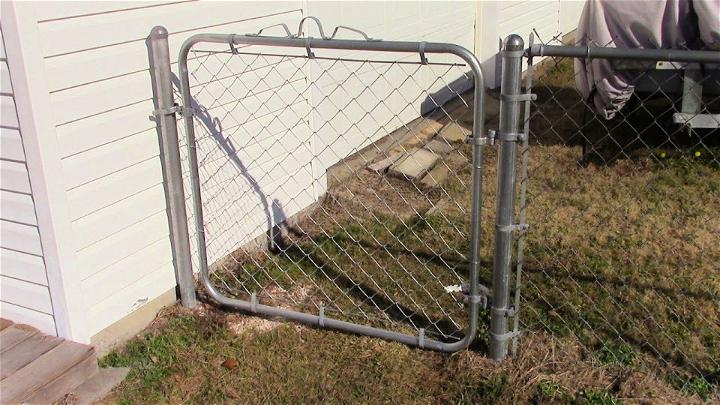
An installation of a chain link fence gate offers a blend of functionality and minimalistic design. It's a practical choice for those looking for a straightforward, secure entry point to their property. Chain link gates are relatively easy to install and maintain, making them a cost-effective security solution.
23. Homemade Vinyl Fence Gate
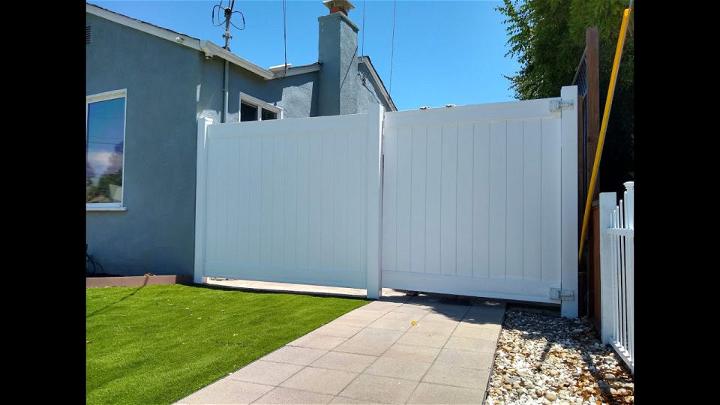
Building a homemade vinyl fence gate is a sleek, modern touch to your property's boundary. Vinyl is known for its durability and low maintenance, resisting weathering unlike some other materials. Its clean appearance keeps your home looking polished with minimal effort.
24. DIY Welded Wire Fence Gate

A DIY project incorporating a welded wire fence gate ensures robustness and open visibility. This type of gate is tailor-made for gardens or pet enclosures, offering security without obstructing views. It's surprisingly approachable for those willing to tackle welding, presenting a sturdy, dependable entryway solution.
25. Heavy Duty DIY Rolling Fence Gate

Building a heavy-duty DIY rolling fence gate is an innovative solution for larger property entrances. This robust design accommodates heavy usage, seamlessly combining sturdiness with ease of motion. It's perfect for those requiring a large, reliable gate without compromising on smooth functionality.
Conclusion:
In conclusion, mastering the art of how to build a fence gate is a practical skill that can enhance your property's security and aesthetics. With the right tools, materials, and a step-by-step guide, you can easily build a sturdy and functional gate for your fence. So, embrace this DIY project and unleash your creativity to improve your home's curb appeal and privacy.
















